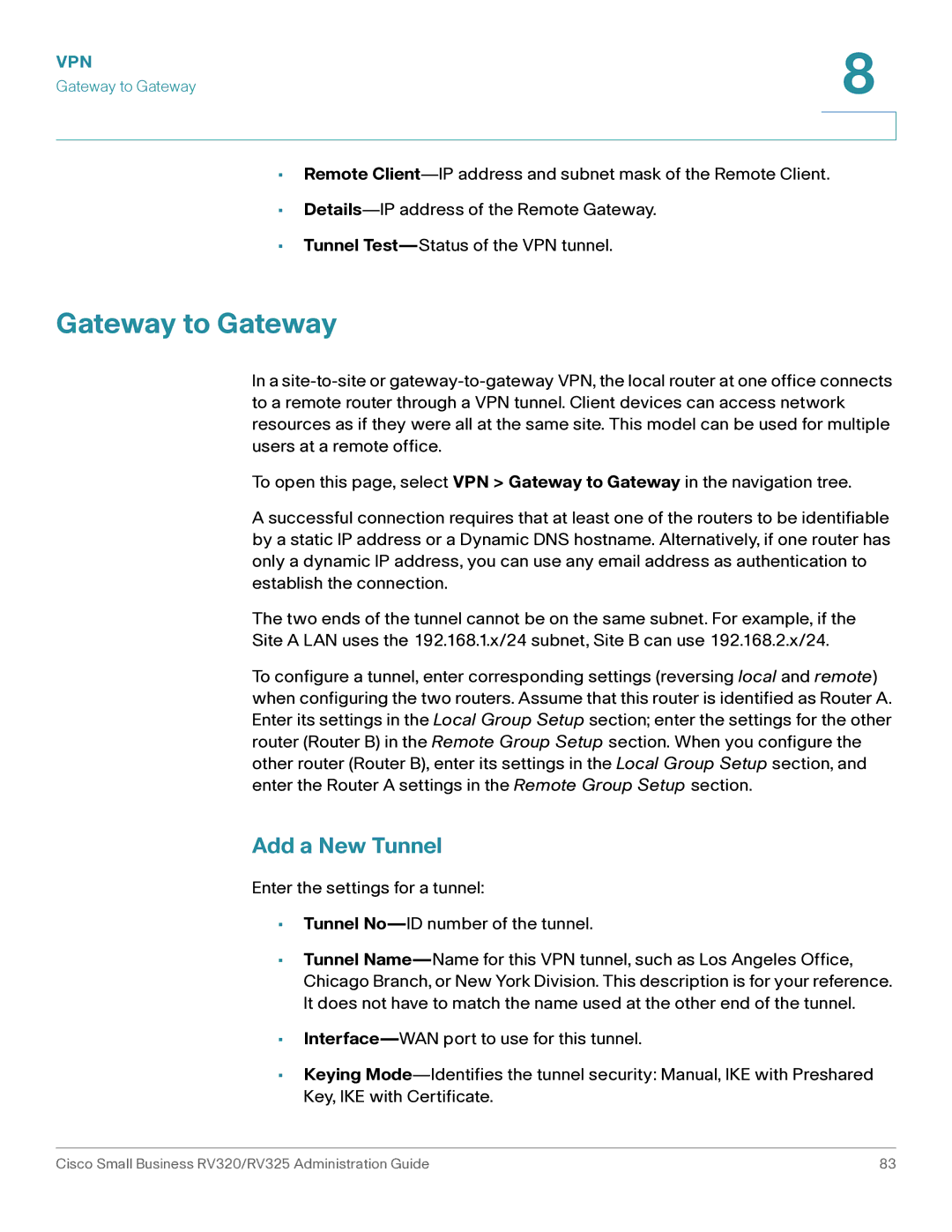VPN | 8 |
| |
Gateway to Gateway |
|
|
|
|
|
•Remote
•
•Tunnel
Gateway to Gateway
In a
To open this page, select VPN > Gateway to Gateway in the navigation tree.
A successful connection requires that at least one of the routers to be identifiable by a static IP address or a Dynamic DNS hostname. Alternatively, if one router has only a dynamic IP address, you can use any email address as authentication to establish the connection.
The two ends of the tunnel cannot be on the same subnet. For example, if the
Site A LAN uses the 192.168.1.x/24 subnet, Site B can use 192.168.2.x/24.
To configure a tunnel, enter corresponding settings (reversing local and remote) when configuring the two routers. Assume that this router is identified as Router A. Enter its settings in the Local Group Setup section; enter the settings for the other router (Router B) in the Remote Group Setup section. When you configure the other router (Router B), enter its settings in the Local Group Setup section, and enter the Router A settings in the Remote Group Setup section.
Add a New Tunnel
Enter the settings for a tunnel:
•Tunnel
•Tunnel
•
•Keying
Cisco Small Business RV320/RV325 Administration Guide | 83 |
